Step 1: The actual part that shall be modelled, is rotated so it fits the layout space.
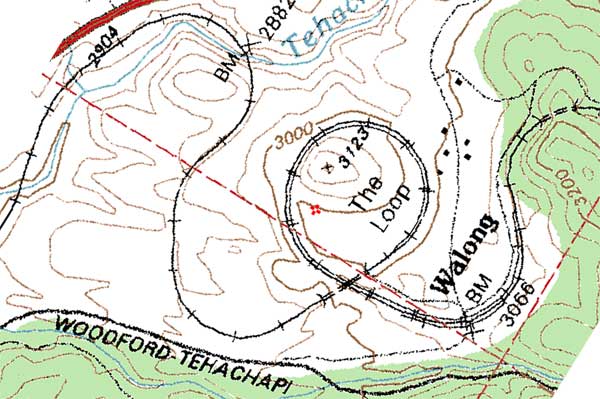
The original map found on TopoZone
Step 2: The map is compressed and warped on the left part and the tunnel after Walong is rotated a little. It results in a shorter layout and fits the space available for the layout. Because of the warping of the original map, the contour lines is also warpet, so the countur lines can be used to construct the terrain and that it will look similar in the model, as in the original world. Hopefully you can still have the feeling of Tehachapi Loop when you look at the plans, and later at the layout.
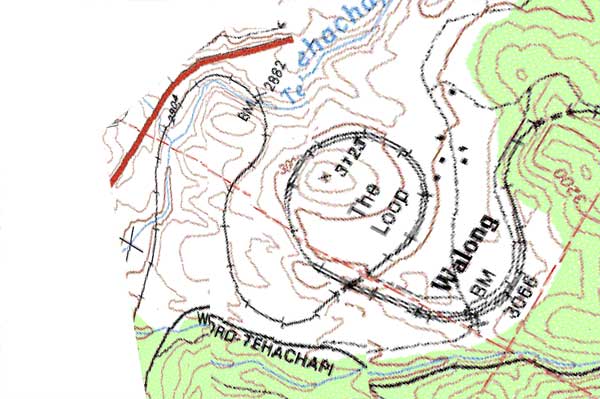
The compressed and warped map
Step 3: The layout is constructed in 3rd Plan It. The scale is not correct, because of the limited space to be used on the layout.
The track design and the contour lines is taken from the original map, to create the layout as accurate as possible, compared to the real world.
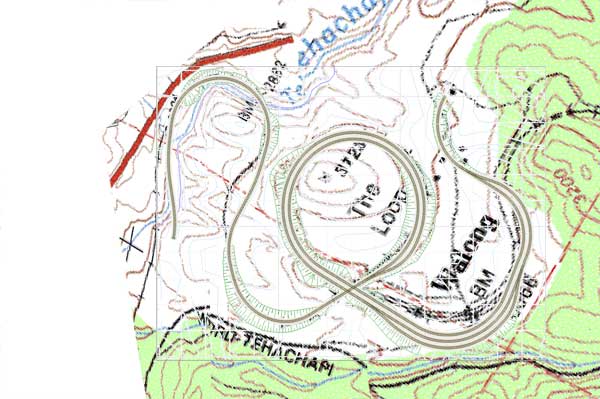
Layout on top of the compressed and warped map
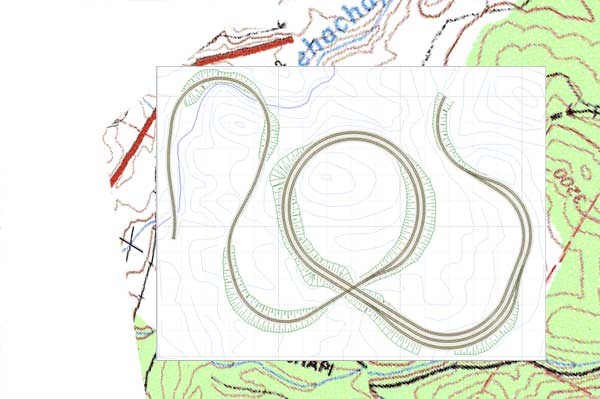
Layout on top of the compressed and warped map
Step 4: The contour lines for the terrain is constructed from the map. The cut and fill is constructed by looking at photos, to try to get an overall feeling that this layout is Tehachapi Loop.
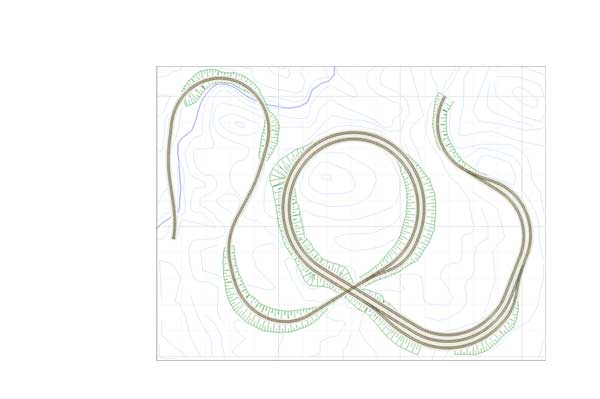
The Tehachapi Layout in Z-scale
|